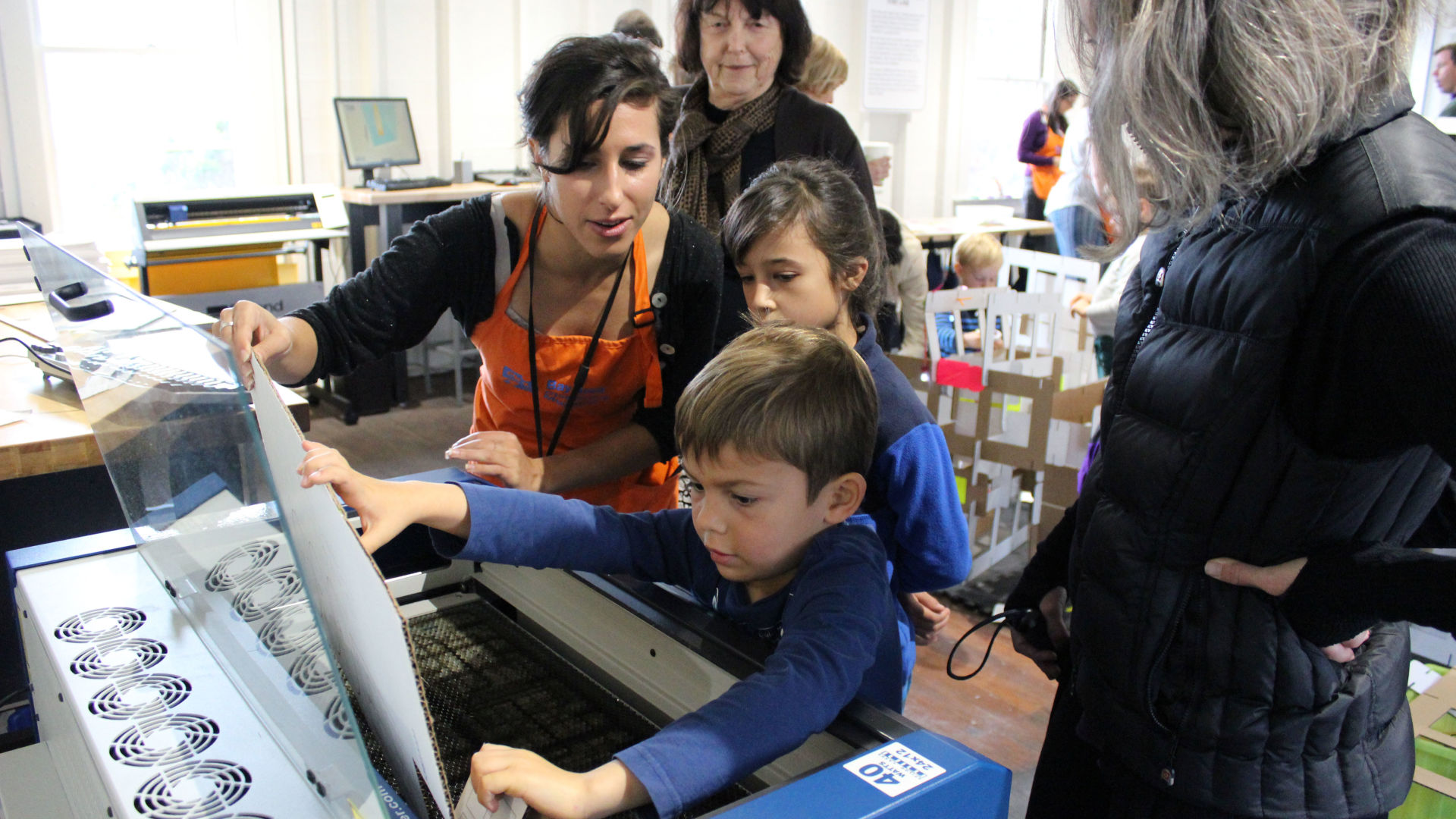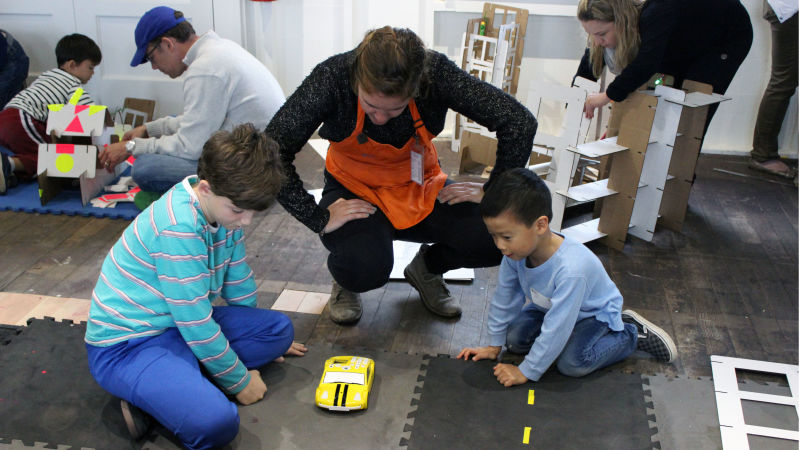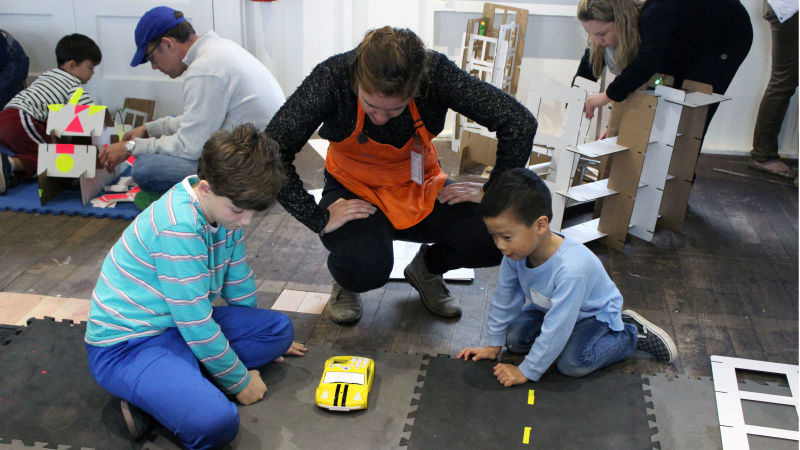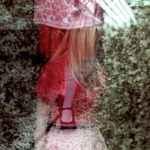“People need ‘tools’ that empower them to work independently, they need these tools and technology to make the most of the energy and imagination each has… society needs to project individual skills and voices, people need to move, to think and have the means to communicate with one another. People cannot make everything for themselves, they need to collaborate and share in a community for it to function.’ Ivan Illich, Tools for Conviviality (1973).
This post features an interview with Elizabeth Rood, Vice President of Education Strategy and Director of the Centre for Childhood Creativity at the Bay Area Discovery Museum in Sausalito, California in which she discusses the timeliness, importance and challenges of developing the world’s first early years Fab Lab.

“We want to shift the way that people think about learning so it is not only based on transmission and close-ended answers. Instead we want to create a rich environment that promotes design, building, construction and an excitement around learning through technology!” Elizabeth Rood
On May 14, 2016 the Bay Area Discovery Museum will open the first early years Fab Lab designed especially for children aged 3 to 10 years old. The Fab Lab movement came out of the MIT Media Lab in the early 2000’s with the original laboratory aiming to explore how technology can power under-served communities through access to information. Labs typically consisting of a small digital workshop space featuring digitally controlled tools such as 3D printers, design software, laser cutters and technology-powered products which individuals to bring their personal ideas to life. There are currently around 600 labs running around the world in museums, libraries, schools and community spaces. Fab Labs are closely linked, yet distinctly different from the maker, DIY, hacker and open source movements through their focus upon design, engineering and creativity.
I visited the Bay Area Discovery Museum in August 2015 whilst in San Francisco doing an artist residency at the Prelinger Library. I was extremely impressed by the museum’s commitment to child-centred practice and the development of an interdisciplinary creative learning pedagogy based on hands-on play.
Louisa Penfold: Elizabeth thanks so much for taking the time to talk this afternoon. The Fab Lab sounds amazing and I am sure there will be lots of people very interested its development. Perhaps we could start by hearing about the value of creativity in childhood and what unique offerings the Bay Area Discovery Museum provide in relation to that?
Elizabeth Rood: One of the things that people get caught up on is whether or not kids actually can be creative when many definitions of creativity are about having some sort of meaningful output that is not just personal but helpful towards the universe and the world. Yet it is really clear from the research that the quality of kids imaginative play is actually a significant predictor of creativity in their adult life. We actually authored a paper recently and one of the key findings in it was the way in which the quality of kids play in childhood, especially if they are able to access rich environments, ends up equipping them with the creative and innovative skills needed for future success. Therefore a lot of value is placed on making sure kids have really rich creative experiences when they are young that will set them up for life. The other finding from that paper was that it zoned in on seven key teachable skills which allow children to develop into more creative adults.
The research shows that creativity is influenced more by your environment and less so by your inborn genetics… so we are more likely to have our parent’s political views passed onto us than creativity.
So rather than focus on this elusive idea of creativity as an inborn trait, if we recognize that these seven habits of mind that help nurture kids and support their growth, then it will lead to them becoming really creative people.
Here at the museum our mission is all about creativity and in our community work we are helping people see the creative potential in all kinds of thinking across different disciplines and not just art. Certainly art is one area where kids are able to build a lot of creativity but as a museum we really want people to realize that deep thinking in math is about creativity and being a really good scientist is about creativity and being an engineer is about creativity.

LP: Yes, for sure. I am interested in the comment you made about the link between a rich environment and creativity. From your research and from your experience working in this field, what are the qualities of an environment that constitute a rich experience for children?
ER: A lot of it has to do with whether or not children are empowered and invited to chart their own course or whether a model is put up by adults, or their peers which says ‘this is what is supposed to happen.’ For example, if you walk into an art creation space and there is a model and an attitude which says ‘okay, now you make it.’ Or another example could be in regards to a science experiment where an attitude may be that there is only one way to go about doing it. This idea that one needs to learn what the experts know and mimic it needs to be turned on its head. We need to put kids in the driver seat!
First of all encouraging the idea that there is not one right path or one right answer. A simple example of this is that we don’t ask kids ‘what is 2 + 8?’ we ask them ‘what are all the different ways you can get to 10?’ Even just in a small flip like that, you could encourage the mind to do much deeper thinking. And also you are setting up the framework of their being multiple right answers and through that a value is placed on originality and original thinking and through that we are teaching our kids that they don’t have to mimic the people that have come before them. So that’s a really big piece of a rich environment.
Another aspect is that research clearly demonstrates that cognitive flexibility is a huge part of creativity so the more we can experience new things and expose our children to diverse ways of thinking about the world, the more the brain becomes wired to promote creative thinking, new ideas and awareness.
The final part of a rich environment links back to the importance of pretend play. I think that sometimes people think that pretend play is something we should be doing to ages five or six but then after that comes this social commentary that it’s not healthy or normal to engage in imaginary play. However if you look at people who have one Nobel Prizes and done amazing ambitious things in their lives there is a huge number of those people who had very rich imaginary worlds pushing into their adolescence and adulthood allowing for the construction of rich imaginary worlds. This allows for a different kind of thinking about reality. These are the kinds of a snapshot of experiences that we would like kids to have at the museum.

LP: So leading on from those ideas of cognitive flexibility, process-based learning and pretend play, in terms of the development of the Early Years Fab Lab at the Bay Area Discovery Museum, what sorts of skills will children learn within the space? I say this in the sense that may parents and teachers have great fear around children using screen-based technology such as iPads and computers as they it as passive consumption of media that takes away time from hand-on creative learning. How will the Fab Lab promote creativity and promote creative skills?
ER: I think part of what we are trying to do is establish a new model of what high quality use of technology in the early years can be. A key quality, you know you have visited the museum, there is no technology on site. This is going to be the first piece of technology at the museum. Part of the reason for this is that we want to promote pretend play and rich imaginary worlds and that often screens, media and technology can be set up to say ‘this is the right way, the right answer to this question.’ A lot of the Apps that are out there are close ended, they made have an educational value such as teaching vocabulary, but they don’t tend to be open-ended. So for us, part of us is about making sure that technology is a tool for creation as opposed to passive consumers of the technology. So that’s a huge difference!
Part of the danger of screen time is not the screen itself but the way in which adults are using them as babysitters.
Within the Fab Lab there is a screen that kids design on, more specifically a touch screen which children and parents are able to use side by side. And the experience doesn’t end there, they then fabricate either a 2D or 3D printout of what they designed so they are using the technology as a tool to make something. Part of what Fab Lab does is linking the artistic and design processes with some of the science, engineering and math concepts to help kids build the kind of underlying design thinking that is really critical in fields like engineering or architecture and any human-centred design field.
LP: So what tools and equipment will feature in the Fab Lab?
ER: At the moment we have Surface Pro tablets and the main reason for that is they have both a touch-screen and ability to plug-in and use keyboards or a mouse. So that is the main computer software that we will use. There will also be iPads as some of the software is optimised with them. In terms of fabrication equipment we have laser cutters that can be used with wood, plastic and cardboard. Then there is a vinyl cutter which is fun for making stickers with the little kids, mainly for use with clip art. There will also be 3D printers which will be running in the space but more for demonstration purposes than anything else as it’s not the right tool to use with young children. It’s a real buzz word, especially in the Bay area so it’s important that we can demonstrate the technology.
The other machines we are prototyping with are small C2C routers and table top routers. We will also have an industrial sewing machine which will be fun. Then there will be simpler things that are not so much about fabrication but more about technology and engineering such as circuit and coding games and toys.
LP: I’m curious to hear a bit more about the development of the technology going into the Lab. The design software and high-tech tools used in traditional Fab Labs have been created for adult use. How has the development team built the technology so that it is safe and accessible for young children?
ER: Well, because we are a museum and we need to have robust public programs experience and we also do a lot of work in the formal education sector with teachers, we have a two-pronged strategy of how we are going about this. So in working with schools, there is software that just was released called Fab@School Maker Studio which is really designed for kids ages 9 and up. It’s been built for in school classroom teachers to be able to do building and hands-on learning but not using very expensive fabrication equipment. It is using something that is called the silhouette printer that is a lot more affordable than 3D printers. We are using this software and in conversation with the software developers to simplify the interface such as using a touch screen instead of a keyboard and mouse. So we are developing something new from something that has already been released.
However this software does not necessarily work in the drop-in space as the program is very math based. It needs to be math-based as otherwise teachers would not be able to use it. At the moment in the United States there are only two things are being assessed which are literacy and math. So we are really thinking of how we can use the Fab Lab to do more hands-on learning.
Fab Labs are really at the intersection of active, experiential learning and technology. It is about linking creative, artistic power with science, engineering and math.
In the public program space, this doesn’t really work. Kids need to have something that is elegant and cool in which they can create something to take home and with a bit more of a wow factor in which they think ‘I want to keep doing this.’ So for the public program space we have landed on Adobe Illustrator, partially because it is the industry standard for fabrication and when you use it on a touch screen it automatically simplifies the interface. So it’s naturally more accessible for kids.
LP: What have been some of the most interesting discoveries you have had so far within the development process?
ER: We have been surprised at how easily kids are using Adobe Illustrator. Kids as young as five have been easily using it and that has been a shock to us. It is really interesting how kids quickly pick up software that has been designed intuitively and elegantly.
Another thing that was really interesting is that parents are more engaged in the early years Fab Lab than they are in other areas of the museum. There is more reciprocal learning going on because it is new for the parents as well. So that has been exciting to see parents jumping in and doing the design alongside their children. Also Dads have been really engaged in the prototyping sessions which is great and we hope that this is a pattern that will continue over the coming months. Overall the adults are really more engaged!
LP: I am sure there will be many people and organisations that will be incredibly interested in your experience of creating the Fab Lab. Do you have any plans to share your findings with the wider community?
ER: Yes, absolutely! We are currently looking into getting funding to get a high-level complex AV system so that we can do remote-in so that people can watch kids in the space from far away. The Fab Lab movement is international and there are people all over the world that are interested in this and part of what we want to do is to share what we learn. This will partially be through the use of video in the space so that people in Belgium, Columbia and Mexico can all watch what is going on. Part of why we are so excited about being part of the Fab Lab movement is because it is international. We will also do writing and presentations to accompany this and possibly a bigger picture research project.
Part of why we are so excited about connecting with the Fab movement as opposed to just the maker movement is that the maker movement has a very open-ended ethos in which children come in and experience what they want. What we are trying to do is build more of a bridge between that open-ended processes and STEM learning. Through this we hope to say that ‘through doing this kind of building, lower income kids from subsidized preschools are learning about shapes in a stronger way that predicts greater achievement over their lifetime.’

Further Links
Csikszentmihalyi, M. (2013). Creativity: The Psychology of Discovery and Invention, Harper Perennial.
Fab Foundation website (2016). FabFoundation.org, viewed March 30, 2016.
Heading, H. (2015). Inspiring a Generation to Create: Critical Components of Creativity in Children, Centre for Childhood Creativity, Sausalito.
Singer, D.; Golinkoff, R.; & Hirsh-Pasek, K. (2009). Play = Learning: How Play Motivates and Enhances Children’s Cognitive and Social-Emotional Growth, 1st Edition, Oxford University Press, London.
TIES website (2016). Teaching Institute for Excellence in STEM (TIES) , viewed March 29. 2016.





Comments
Pingback: A visit to the Children’s Wing at The Louisiana Museum of Modern Art, Denmark – Art. Play. Children. Pedagogy.